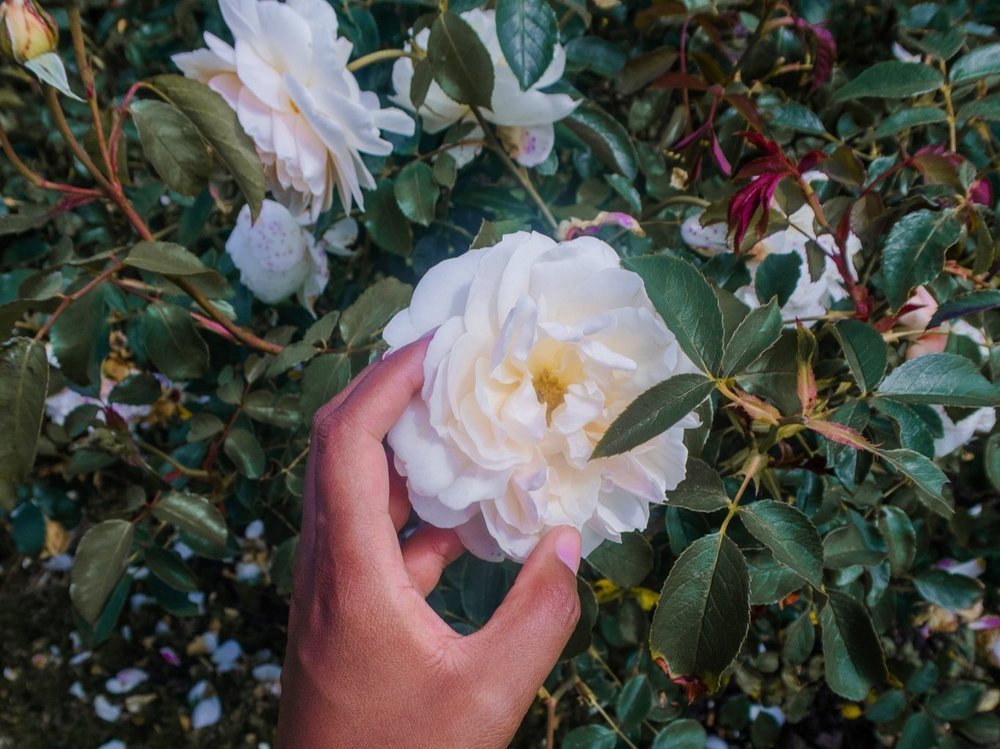How to create a cottage garden in 8 steps
An art comes from planning your garden so that the flowers look like they were thrown together haphazardly, even if they aren't very well planned. But it's actually not hard to do.
This kind of English garden style that we think of when we think of pretty thatched cottages can, in fact, work with any kind of home. Cottage garden design is romantic, pretty, and bubbly. It can be used in a country, town, or city garden, and it looks so charming & great.
This old-fashioned style is still very popular, and now it's a mix of modern plants and old-fashioned favourites.
WHAT IS A COTTAGE GARDEN?
For people who love plants, a cottage garden design is perfect. It's all about making sure every square inch of ground is covered with plants in an unstructured way.
Forget about neatly trimmed herbaceous borders with strict colour schemes. In order to plan a cottage garden, you need to put together an informal mix of close-spaced flowers in a wide range of colours to make it look good.
The garden was originally used to provide food and medicine for a farm worker's home. The style has changed over time and is now known and copied all over the world. The idea of a country idyll has made cottage garden design more beautiful, with ornamentals and food, and with a focus on biodiversity.
When you visit Monty Don's Longmeadow garden in Herefordshire, you can see a cottage garden that is "traditional but essentially floral," he says. It's full of "blowsy and soft colours," but it also has fruit trees, rhubarb, gooseberries, and some herbs mixed in with the flowers.
You will feel at ease and have a good time in a cottage garden. You don't have to follow any strict rules or set rules. Some of the characteristics of the cottage garden style are weathered and rustic materials, vintage details on plants that have been passed down for generations, and an almost haphazard look.
If you want to make a cottage garden, you need to think about how to lay out the plants and how to plant them.
When planning a cottage garden, the most important thing is to keep the layout simple, because the infill will be very full and busy.
1. THE FIRST THING YOU SHOULD DO IS START WITH JUST ONE BORDER AT A TIME.
If you want to avoid too much work, start small by planning a cottage garden area or border, and then grow it as your confidence grows.
If you have a picket fence, you could put this cottage garden design behind it. You could also put low hedging around it, or put it in front of your front door to welcome visitors.
2. THE SECOND THING TO DO IS TO THINK ABOUT WALKING PATHS AND TRAILS. THIS IS WHAT YOU SHOULD DO.
Garden paths made of stones or old bricks or gravel or grass are a visual break from the wild plants in a larger cottage garden design.
'A cottage garden should have winding paths that are only visible in the middle of the summer when the beds are full of plants. Catherine Fairhall Lewis, an RHS horticulturalist who looks after the cottage garden at RHS Hyde Hall, says that these paths lead your eye to a focal point. This could be your house, an arbour, or even a simple bench.
The cottage garden design is right at home with soft, curving paths that blend in.
3. ADD SOME PRETTY GARDEN ACCESSORIES TO MAKE THE EYE GO WHERE YOU WANT IT TO GO.
Ornaments, like a rustic birdbath, sundial, or seat, help break up the intensity of the plants and give the eye a place to rest.
Upcycling, recycling, and old things go well with the cottage garden design. For example, a wheelbarrow full of flowers, moss-covered statues, stone finials half-buried in plants, tools turned into sculptures, or rustic troughs filled with flowers. This is a chance for you to show off your own preferences, so do what makes you happy. There aren't any rules.
4. MAKE HEIGHT TO EMPHASISE THE VERTICAL.
When you add height to your garden by building romantic arbours and other structures with scented climbing plants, such as roses, honeysuckle, or even obelisks, you can make your garden look even more beautiful. But use these features only a few times so the whole thing doesn't get too crazy.
5. CHECK THE SOIL.
Test your soil so you can figure out which plants are best for it and add organic matter, like compost, to help it grow. Good, organic soil where plants can grow without having to be watered or fed a lot will make the job easier. Mulching also helps keep the soil moist and keeps weeds at bay.
6. CHOOSE PLANTS THAT GROW NATURALLY.
There are plants that can grow in the sun and in the shade, as well as different types of soil. Most plants in a cottage garden like to be in the sun.
It's your goal for the plants to look like they were put in by themselves. You should think about where your trees, roses, and shrubs should be placed first. A horticulturalist says that small flowering perennials will be planted around these, and then your annuals will fill in any gaps that remain.
7. COVER THE GROUND.
There is no social separation in a cottage garden design. Instead, it's all about cramming as many plants and flowers into the space as you can. Use plants that are good at what they do, like un-hybridized flowers that pollinators like. Keep the dense look of your plants going all year long by planning for a succession of blooms.
8. THE EIGHTH THING TO DO IS TO CHOOSE COLOURS WITH CONFIDENCE.
Choose a colour scheme that makes you happy and fits with the architecture of your home. You can go soft and pastel, dreamy and romantic, or bright and clashing.




